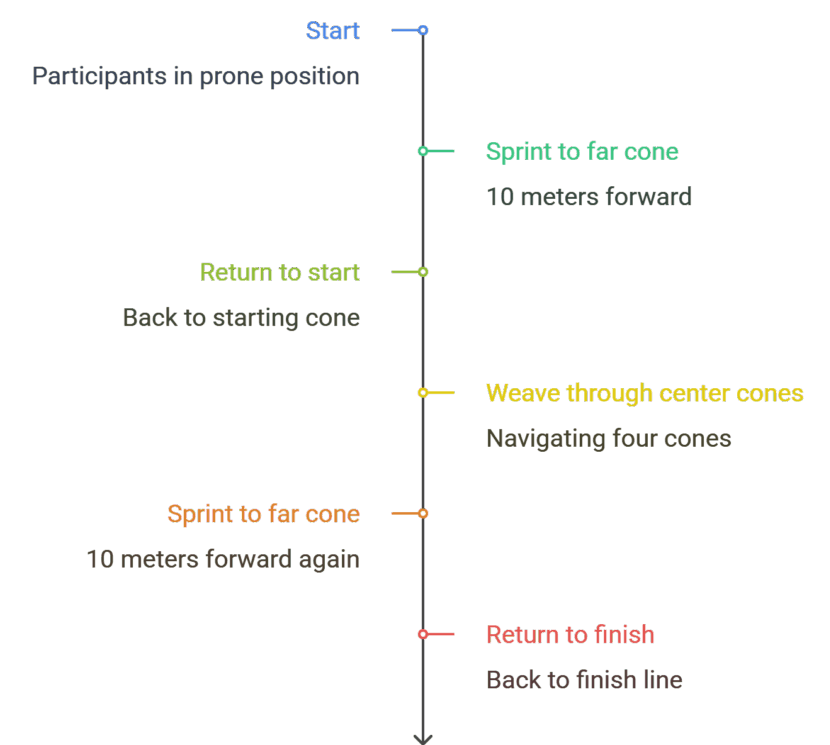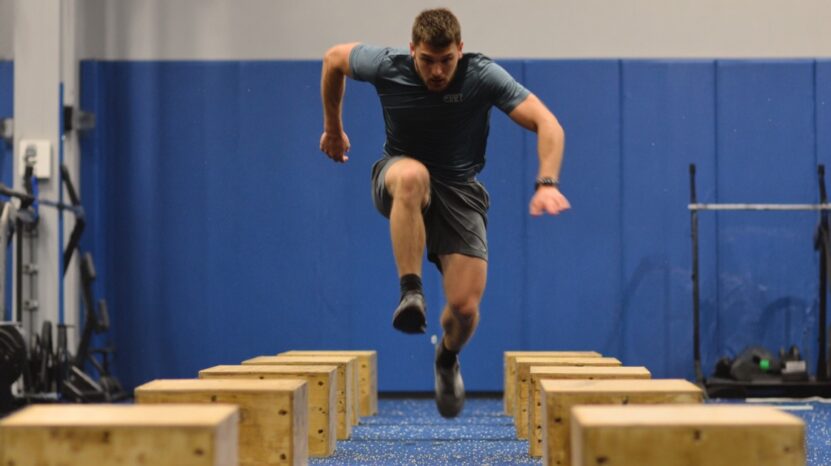The illinois Agility Test, often abbreviated as IAT, serves as one of the most respected assessments for evaluating quickness and directional control in human performance.
Agility represents a vital component in both athletic and tactical environments, determining how effectively an individual can change direction, accelerate, and maintain balance under pressure.
Such abilities are essential in sports like football, basketball, and soccer, as well as in professions such as law enforcement, firefighting, and the military.
Used worldwide, the Illinois Agility Test provides measurable data on movement efficiency, making it a trusted tool among coaches, physical trainers, and rehabilitation specialists.
Let us talk about it.
What Is the Illinois Agility Test?
- Control
- Coordination
- Balance
It is not merely about speed but also about how the body reacts under sudden transitions between forward, lateral, and weaving motions.
View this post on Instagram
Designed to assess multiple aspects of athleticism, it plays a major role in sports, physical education, and physically demanding professions such as policing and the military.
- Prone start position – Participants begin lying face down, emphasizing reaction time and explosiveness.
- Multidirectional sprinting and weaving – The pattern challenges the athlete to navigate quickly through cones, testing acceleration, deceleration, and coordination.
Serving as a benchmark for agility, the Illinois Agility Test provides valuable insight into overall physical preparedness and movement efficiency.
Test Setup and Equipment
Proper setup ensures accuracy and fairness during the Illinois Agility Test. The testing area must be flat, firm, and non-slip to prevent injury and allow consistent performance.
Standard dimensions typically include a length of 10 meters and a width of 5 meters, though certain agencies like the NSW Police use slightly shorter measurements (9.14m by 4.6m).

- 8 cones to mark turning and weaving points
- Stopwatch or electronic timer for precise time measurement
- Flat, non-slip surface to ensure safety and reliability
- Assistant (optional) to help monitor or record times
Accuracy in setup is critical since even small deviations in distance or cone placement can affect performance outcomes.
A consistent environment allows repeat testing and valid comparisons across athletes or sessions.
Step-by-Step Test Procedure
Participants begin in a prone position, face down with the chin aligned to the start line.

- Sprint forward 10 meters to the far cone.
- Return to the starting cone.
- Weave through four center cones positioned in the middle line, moving up and back.
- Sprint again to the far cone and return to the finish line.
Rules are strict to maintain test integrity:
- Each end line must be touched with at least one foot.
- Any cone knocked over or incorrectly navigated results in disqualification.
- For NSW Police standards, two attempts are permitted, with the best score recorded.
- Consistency in execution allows accurate measurement of agility, balance, and control.
Scoring and Normative Data

Scoring is based on the total time required to complete the full course, measured in seconds. Faster times indicate superior agility and coordination.
- Males aged 16–19 years: Excellent <15.2s; Poor >18.3s
- Females aged 16–19 years: Excellent <17.0s; Poor >23.0s
- Service Members: Mean ≈ 18.26s ± 1.04s
Interpretation of results should consider body type, training background, and test conditions. Repeated testing can help track progress over time or evaluate the effectiveness of agility-focused training programs.
Tip: For athletes looking to assess overall lower-body explosiveness alongside agility, understanding vertical jump height norms can provide valuable complementary insight.
Reliability and Validity
The Illinois Agility Test demonstrates strong scientific credibility across various populations.
Test–retest reliability studies show intraclass correlation coefficients (ICC) between 0.68 and 0.99, confirming consistency in repeated trials.
Validity is supported by significant correlations with other agility measures, such as the T-Test, which also evaluates quick directional movement.
- Standard Error of Measurement (SEM): 0.52–0.65 seconds
- Minimal Detectable Change (MDC): Approximately 1.8 seconds
Such values indicate that minor variations in performance are within normal limits, while improvements beyond these thresholds reflect genuine enhancement in agility.
Due to its multidirectional format, the Illinois Agility Test effectively assesses movement across multiple planes, providing a balanced view of coordination and speed.
The Bottom Line
The Illinois Agility Test remains an essential tool for evaluating speed and directional control in athletes, soldiers, and tactical professionals. Its structured yet practical design allows for consistent measurement of agility and coordination, making it useful in performance training, talent identification, and rehabilitation programs.
Regular inclusion of the IAT alongside complementary assessments, such as sprint tests or reaction drills, can provide a complete agility profile. By integrating it into training regimens, individuals gain an accurate perspective of movement efficiency and readiness for competitive or occupational performance.

